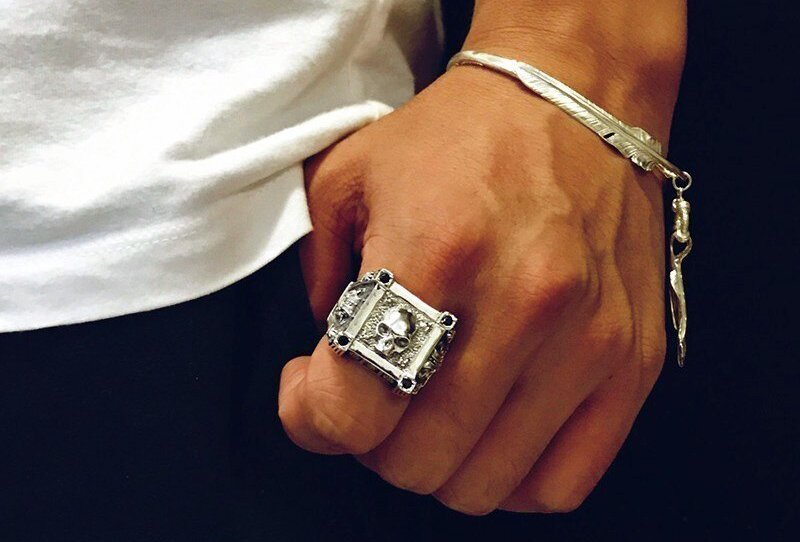When you see a person wearing a skull ring (or skull jewelry in general), what feelings do you have? Does it cause fear, dismay, or aversion? Many people regard skulls as something bad, as a symbol of death, destruction, and danger. Indeed, skulls can be seen placed on things you should avoid dealing with (poisons, for example). Skulls and crossbones are often present on military insignia to intimidate enemies (for the same reason, by the way, the pirates’ flag, Jolly Roger, features a skull). But did you know that skulls have a different, much more positive, meaning?
Two Sides of the Skull
So, the negative side of skulls is familiar to everyone. However, there is something that made skulls much-respected all over the world. It turns out that many cultures believe in skulls’ connection with the world of immortals. During some magical rituals, skulls can give immortality; at least this is what ancient shamans and priests hoped for.
When people discovered that a skull accommodates brain, it immediately became a symbol of wisdom and knowledge. And this is another important significance for the skull.
In the 17-19 centuries, skulls became widespread among military units in Europe. Not only was it present on military insignia to intimidate enemies but also to manifest warriors’ bravery and valor.
From ritual attributes and military ornaments, skulls migrated to jewelry. Their meaning, however, remained unchanged.
Who Wear Skull Rings
Throughout its history as a symbol, the skull was widespread among various strata of society, from tribe chiefs and high priests to sea wolves and rogues. In the 20th century, besides the military, skulls caught bikers’ attention. The newly-born subculture was seeking its own symbolism and ways of self-manifestation, so the skulls came in handy. The founders of the biker movement were the WWII vets who saw many skulls drawn on military equipment, banners, and insignia, so it came as no surprise that they took this symbol to the civil life. Besides, the skull was a popular motif of Mexican rings that became the first biker jewelry.
Bikers influenced many other kindred subcultures. Rockers, for instance, were inspired by their love for leather outfits. Goths share their passion for outlandish jewelry. Punks try to convey similar ‘toughie’ vibe. All these subcultures are crazy about skull rings, pendants, bracelets, and so on. It was only a matter of time when fashion designers introduce skull jewelry to mass consumers, and so they did at the end of 20 century. Today, skull jewelry is sought-after by fashion plates no matter what subculture they belong (or don’t belong).
Skull rings are available in all possible shapes, sizes, and designs to suit people of any taste and budget. The most popular are massive solid rings made of silver. This metal loved and respected by Goths and bikers who believe in its magic properties. There are even skull engagement rings that resemble eternity rings but instead of diamonds, they have little skull faces. The skulls themselves can be smiling, grinning, sad, angry, smug, demonic, etc. Also, it is popular to portray skulls as famous characters (such as skull Jack Sparrow), eye-patched pirates, riders in helmets, Indians in war bonnets, bearded hipsters, etc.
